A fiberscope is a flexible instrument that is constructed of a coherent fiber optic image guide that is used to inspect remote areas. A fiberscope is inserted into the item without destroying or disassembling the item of interest.
Components
A Fiberscope consists of the following:
- Coherent fiber optic image guide
- Fiber optic illumination guide
- Relay lens (eyepiece) at one end and an objective lens at the other
- Light Source to illuminate the target being inspected
Characteristics:
A Fiberscope typically is available with the following specifications
- Diameter: 0.35 to 10.0mm (.0138 to .393 in.)
- Length: 15m (50 Ft.) maximum
- Tip Articulation: 2 or 4 way tip articulation is available on diameters larger than 2.4mm (.094 in.)
- Sheathing: tungsten, stainless steel, nylon, Teflon or polyimide
Applications:
A fiberscope is typically used for remote visual inspection of the interior of areas that would otherwise not be visible. Fiberscopes are used to non destructively inspect industrial systems and equipment for condition, manufactured parts for quality and security and law enforcement for contraband, intelligence and safety.
Common Inspections Include internal viewing of:
- Impellers
- Surgical and medical components
- Turbine blades
- Internal Combustion Engines
- Gearboxes
- Welds
- Cast Parts
- Manufactured or machined parts
Technology:
Coherent image guide:
The image quality or resolution is dependent on the number of pixels in the fiberscope image guide. Typically, a larger diameter fiberscope will have more pixels.
Leached fiber optic image guide:
A leached fiber optic image guide will have the advantages of greater flexibility, however, are not available in fiberscope instruments smaller than 2.4mm.
Quartz fiber optic image guide:
Fiberscopes made with a quartz image guide are available in smaller diameters and can also transmit ultraviolet light.
CCD Cameras:
Fiberscopes are typically connected to a CCD camera to display the image on an external display or PC and allow recording of the inspection.
Light Sources:
A fiberscope requires external illumination to highlight the area being inspected. Several technologies are available including: Halogen, Xenon, Solarc® and LED light sources. Each has specific price and performance advantages.
Fiberscopes From Advanced Inspection Technologies




